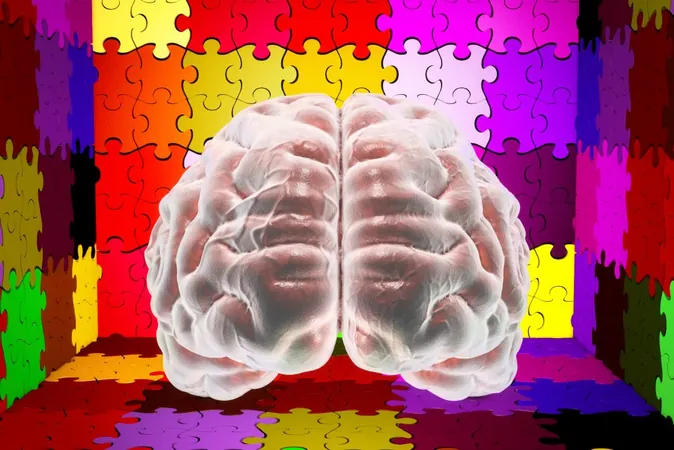
Groundbreaking Study Links Autism Symptoms in Mice to Imbalance of Nerve Proteins, Paving the Way for Future Treatments
2025-04-01
Author: Nur
Introduction
Recent research from Wenzhou Medical University and Xiamen University has unveiled a fascinating connection between autism symptoms in mice and a disruption in the balance of two competing nerve proteins. This groundbreaking study, published in PLOS Biology, offers new insights that may shape future therapeutic approaches for autism spectrum disorder (ASD).
Study Overview
In their research, titled “Mdfa2 deficiency leads to an aberrant activation of BDNF/TrkB signaling that underlies autism-relevant synaptic and behavioral changes in mice,” scientists led by Dr. Dongdong Zhao and Dr. Yun-wu Zhang observed that the prevalence of ASD has notably increased, with around 1% of the global population affected. While this condition is characterized by reduced social interaction, repetitive behaviors, and cognitive differences, the precise causes continue to elude researchers.
Key Proteins Involved
The study focuses on two neuronal proteins—MDGA2 and BDNF (brain-derived neurotrophic factor). MDGA2, which plays a critical role in transmitting nerve signals, has been previously associated with ASD. The findings revealed that mice with lower levels of MDGA2 exhibited behaviors akin to autism, such as repetitive grooming, social withdrawal, and cognitive impairments. Notably, these mice also displayed heightened activity in specific nerve synapses and increased BDNF levels, highlighting a significant shift in neuronal activity linked to ASD.
Signaling Pathways
The team discovered that the disruption of MDGA2 led to excessive BDNF/TrkB signaling, which could be a potential driver of ASD-like behaviors. When treated with an artificial peptide mimicking MDGA2 to inhibit this signaling pathway, the mice exhibited fewer symptoms. Dr. Zhao and colleagues noted, “Inhibiting the BDNF/TrkB signaling can mitigate excitatory synaptic activity and social deficits in MDGA2-deficient mice, presenting a promising therapeutic avenue.”
Competitive Relationship between Proteins
This innovative study suggests a compelling competitive relationship between MDGA2 and BDNF for binding to the TrkB protein, establishing a natural equilibrium essential for normal neuronal function. The findings indicate that an imbalance in this protein system may contribute significantly to the development of ASD symptoms.
Implications for Future Research
Dr. Zhang emphasized, “Our research unveils new mechanisms by which MDGA2 mutations can lead to ASD symptoms, underscoring the necessity for further studies into the BDNF/TrkB signaling in ASD patients, especially regarding varied genetic and environmental influences.”
Conclusion
As the understanding of autism continues to evolve, this research not only sheds light on underlying biological mechanisms but also offers hope for targeted therapies that could transform lives. The results highlight an urgent need for precision treatment strategies—a vital step forward in addressing the complex challenges of autism spectrum disorder. As more studies are planned, the scientific community remains optimistic that breakthroughs are on the horizon, potentially altering the landscape of autism research and treatment.



 Brasil (PT)
Brasil (PT)
 Canada (EN)
Canada (EN)
 Chile (ES)
Chile (ES)
 Česko (CS)
Česko (CS)
 대한민국 (KO)
대한민국 (KO)
 España (ES)
España (ES)
 France (FR)
France (FR)
 Hong Kong (EN)
Hong Kong (EN)
 Italia (IT)
Italia (IT)
 日本 (JA)
日本 (JA)
 Magyarország (HU)
Magyarország (HU)
 Norge (NO)
Norge (NO)
 Polska (PL)
Polska (PL)
 Schweiz (DE)
Schweiz (DE)
 Singapore (EN)
Singapore (EN)
 Sverige (SV)
Sverige (SV)
 Suomi (FI)
Suomi (FI)
 Türkiye (TR)
Türkiye (TR)
 الإمارات العربية المتحدة (AR)
الإمارات العربية المتحدة (AR)